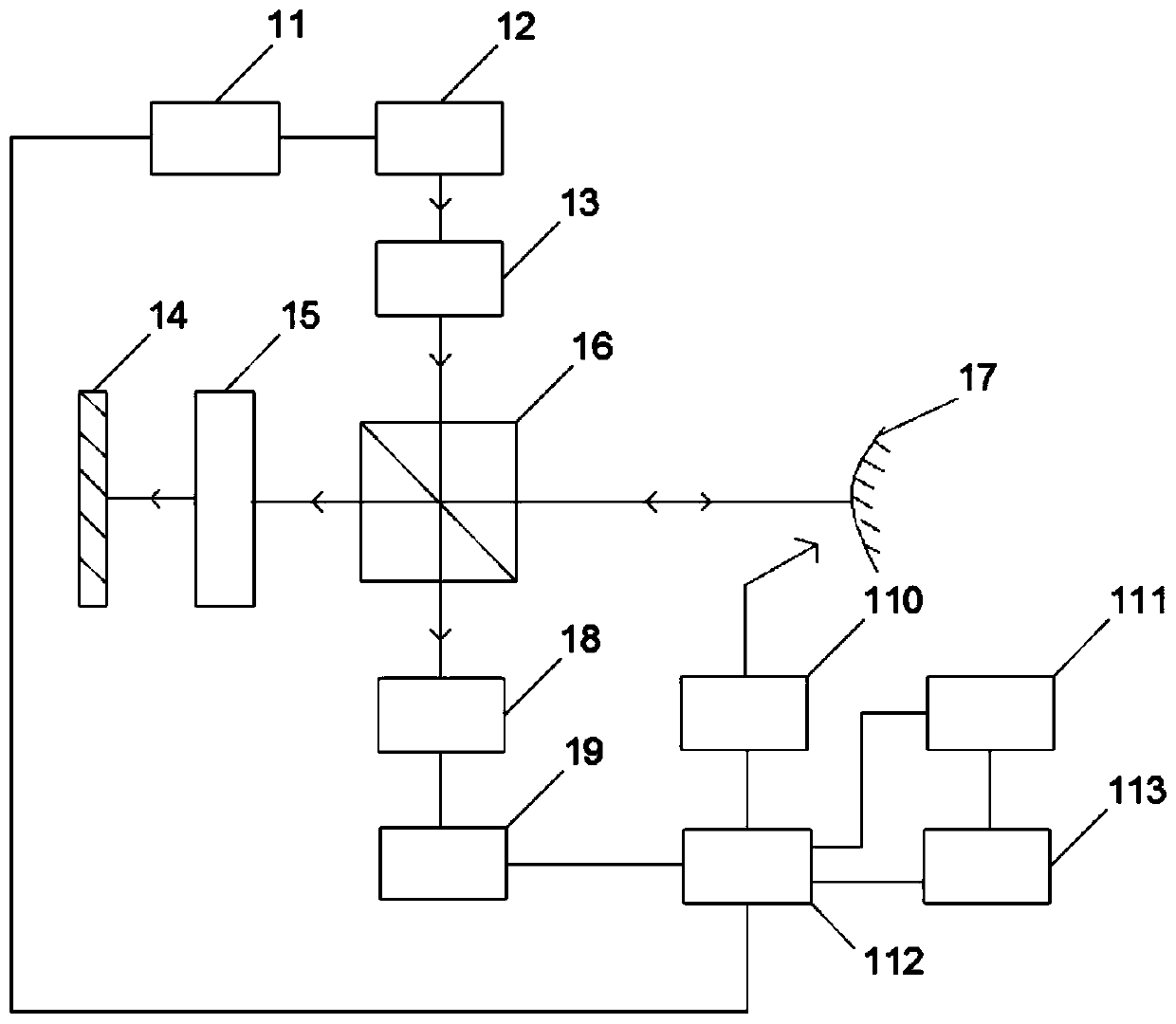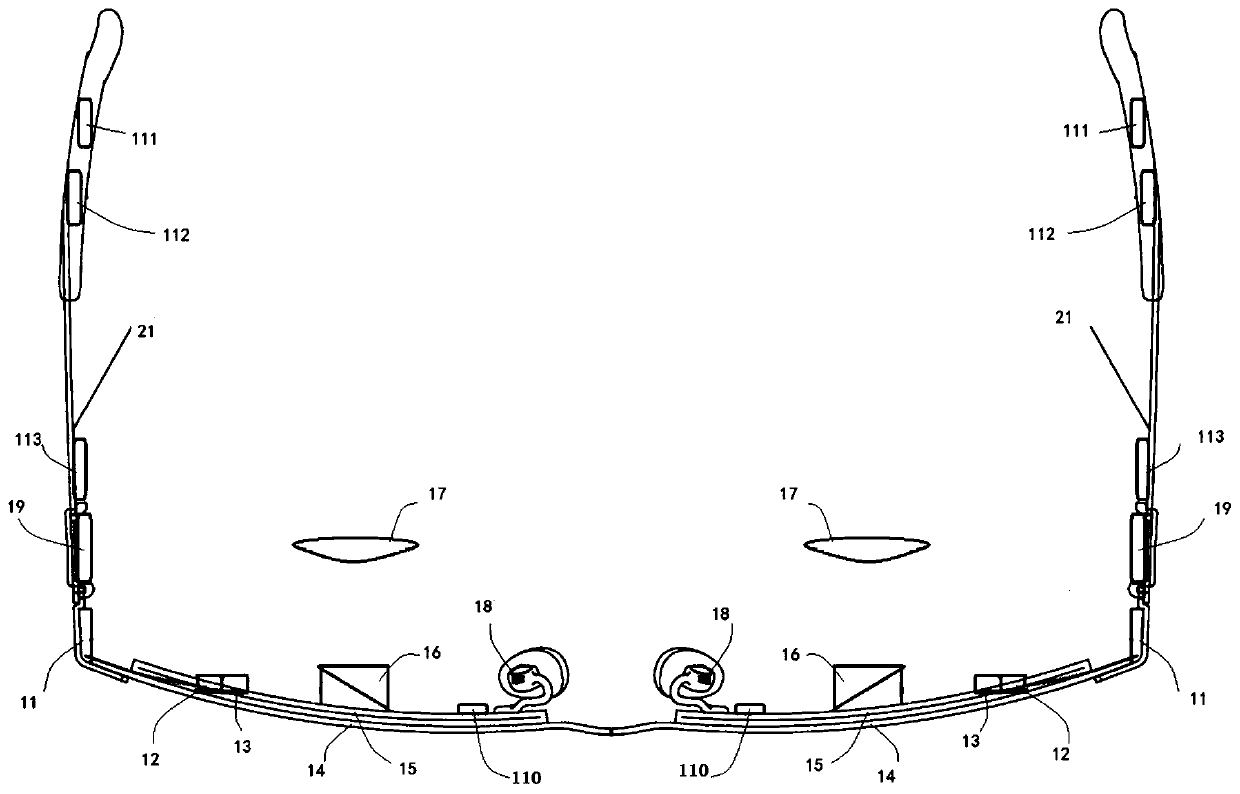Non-invasive non-contact coherent intraocular pressure and intracranial pressure measuring method and device thereof
A non-contact, measuring device technology, used in intracranial pressure measurement, tonometer, diagnostic recording/measurement, etc., can solve problems such as poor reliability and interference, and achieve convenient wearing, high measurement accuracy and simple structure Effect
- Summary
- Abstract
- Description
- Claims
- Application Information
AI Technical Summary
Problems solved by technology
Method used
Image
Examples
Embodiment 1
[0041] A non-invasive and non-contact coherent intraocular pressure measurement device. As the aqueous humor flows back to the central retinal vein and vortex vein through the trabecular meshwork pathway and the membrane-sclera pathway, and finally flows back into the cavernous sinus located in the intracranial, the intraocular pressure in the aqueous humor There is a correlation with intracranial pressure; therefore, the present invention measures intraocular pressure based on human eye aqueous humor 17 .
[0042] Including laser emission module, beam splitter 16, photodetector 18, pulse wave measurement module 113 and microprocessor 112;
[0043]The laser emitting module includes a laser 12 for emitting laser and a laser controller 11 for controlling the laser 12, the laser controller 11 can control the laser 12 to emit laser that requires pulse width and phase characteristics, and the laser 12 The near-infrared laser 12 can be a continuous laser 12 or a pulsed laser 12, and...
Embodiment 2
[0051] Based on Embodiment 1, this embodiment provides a wearable non-invasive non-contact coherent intraocular pressure measurement device. The wearable device is glasses-type, that is, includes a frame, temples and nose pads. In this embodiment, the left eye is taken as an example, since the structures of the right eye and the left eye are mirror images, details are not described here.
[0052] The photodetector 18 of the left eye is arranged on the back of the left nose pad, that is, on the support frame of the left nose pad, the beam splitter 16 of the left eye is arranged in the middle of the left frame, and the position of the spectacle lens is replaced by an attenuator 15 and an absorbing film 14. Both the attenuator 15 and the absorbing film 14 are sheet-shaped, the beam splitter 16 is arranged on the attenuator 15, the laser 12 is arranged on the left side part of the attenuator 15, the photodetector 18, the beam splitter 16 and the laser 12 On the same optical face, ...
Embodiment 3
[0055] This embodiment provides a non-invasive and non-contact coherent intraocular pressure measurement method. The calculation formula of intraocular pressure is as follows:
[0056] P eo =P ei +ΔP=P ei +K×Δn×f(P bp ),
[0057] Among them, P ei Indicates the reference intraocular pressure, ΔP indicates the variation of intraocular pressure, K indicates the empirical value of intraocular pressure, Δn indicates the variation of the number of interference fringes, f(P bp ) represents the pulse wave fluctuation function.
[0058] This embodiment also provides a method for measuring non-invasive and non-contact coherent intracranial pressure. The formula for measuring intracranial pressure is: P ho =m×P eo ;
[0059] Among them, m represents the linear ratio of intracranial pressure to intraocular pressure, which is a constant, which is related to the test individual, and usually ranges from 0.7 to 1.2.
PUM
 Login to View More
Login to View More Abstract
Description
Claims
Application Information
 Login to View More
Login to View More - R&D
- Intellectual Property
- Life Sciences
- Materials
- Tech Scout
- Unparalleled Data Quality
- Higher Quality Content
- 60% Fewer Hallucinations
Browse by: Latest US Patents, China's latest patents, Technical Efficacy Thesaurus, Application Domain, Technology Topic, Popular Technical Reports.
© 2025 PatSnap. All rights reserved.Legal|Privacy policy|Modern Slavery Act Transparency Statement|Sitemap|About US| Contact US: help@patsnap.com


